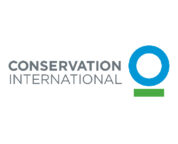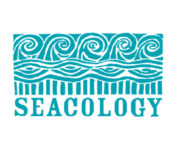PhD Phillip Dustan and Papua Diving dive guides taught students from the RARCC education center in Yerweser, Batanta, how to restore corals and how to kill Crown-of-thorns starfishes (COTS) on the 11th of December.
“Corals make houses for fishes as trees make houses for birds. So we need to protect the corals to protect the fishes”, the marine ecologist specialized in the ecology, vitality, and remote sensing of corals told the 67 students.
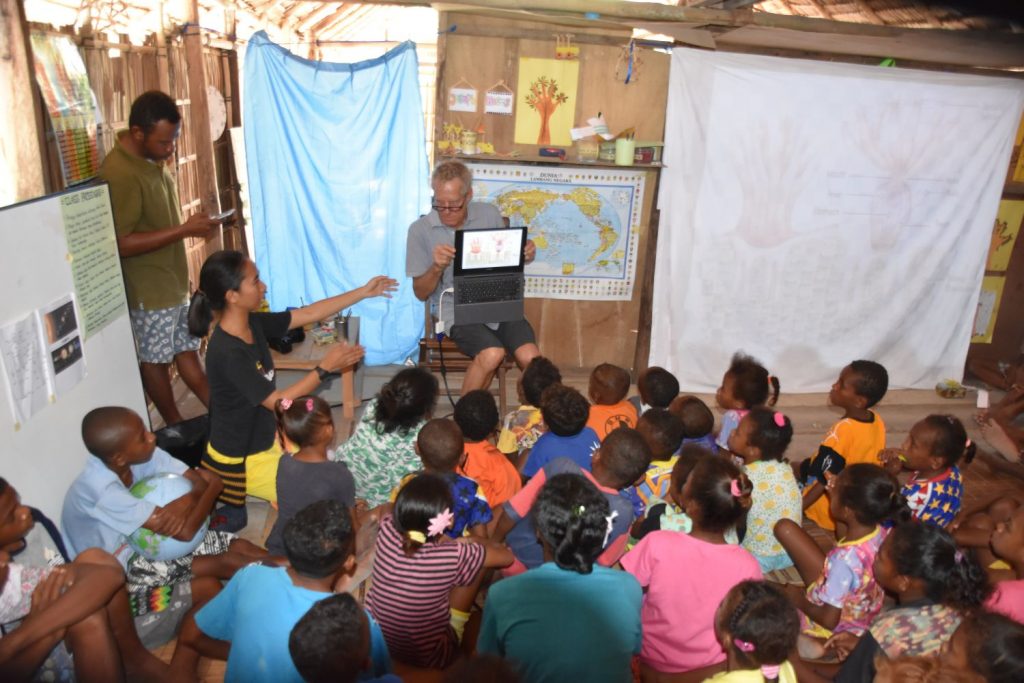
The College of Charleston biology professor explained how important the corals are for fishes and humans. Phillip Dustan, who has also won an Emmy Award for his part in the film “Chasing Coral”, pointed out that corals are animals with stomachs and mouths.
The expert also explained to the students how to restore reefs and kill COTS, after several days working and teaching Papua Diving guides how to give reefs a new life.
Aurelius Kabes and Fredrik Sarwa, two dive guides from Yerweser trained by Papua Diving, helped to work with the students in the sea after masks, snorkels and fins had been distributed among the students.
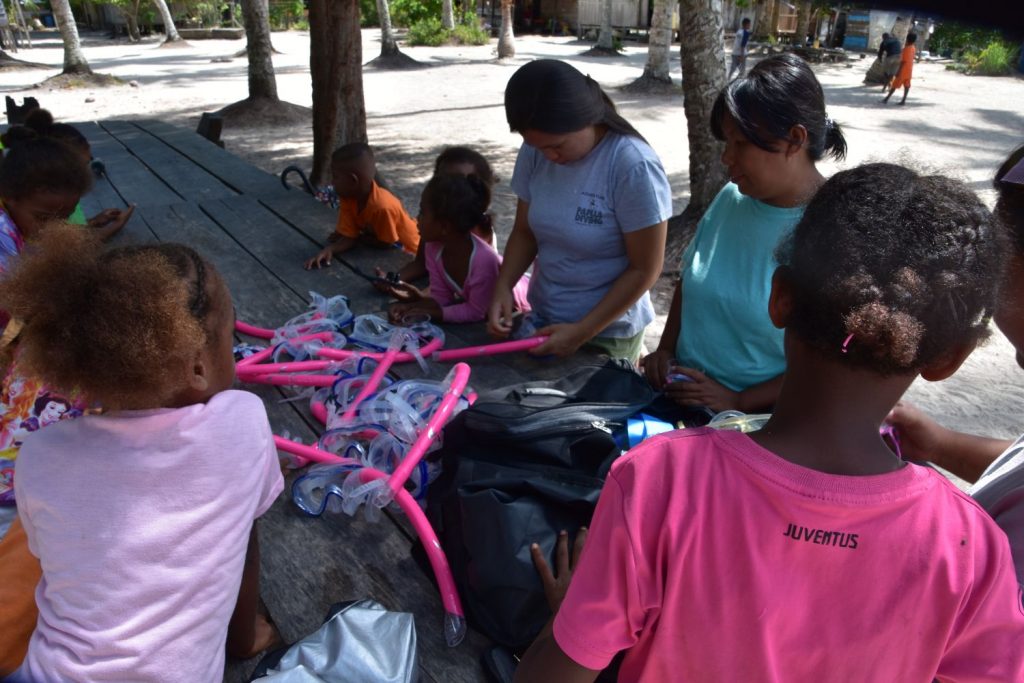
The professor also showed them images of a 200-year-old coral that he and Aurelius Kabes saved by taking the pieces that were broken and put them properly into the coral again.
“The coral reefs are the biggest living structures on the planet”, he underlined, showing an image of a 40-kilogram reef.

Last September, Papua Diving sent Aurelius Kabes and another Papuan dive guide Theopilus Sauyai to attend the Coral Feer Restoration training held by Coral Guardian, in Labuan Bajo. There, together with the team, they transplanted 930 corals around Hatamin island.
Dr Phillip Dustan visited the Yerweser village with Bruce Butterworth, an American transportation security consultant who is equally committed to save the reefs.
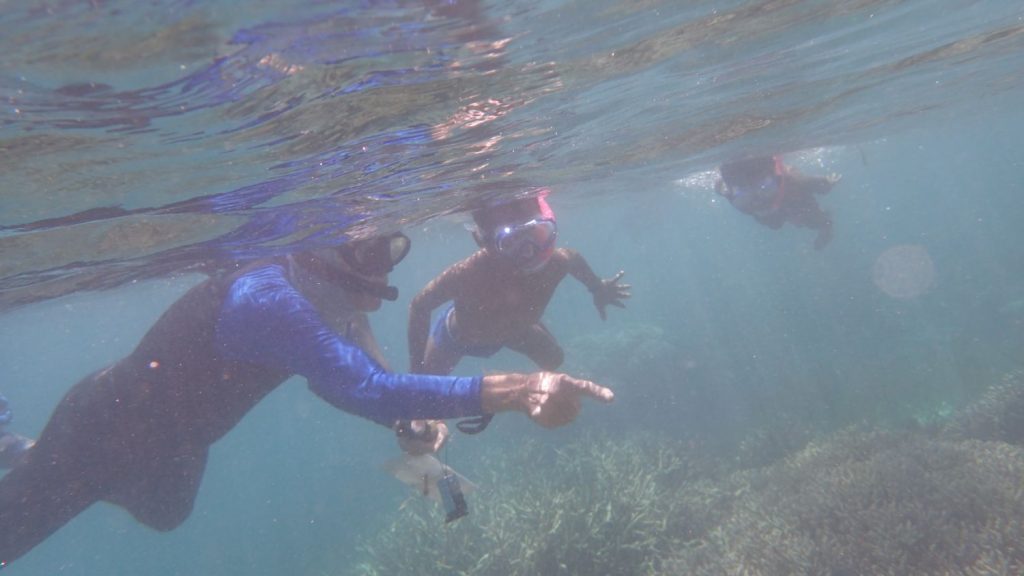
Both stayed at the RARCC and Papua Diving facilities for several weeks and took many actions to protect and restore the reefs in Raja Ampat.
They brought 96 masks, 1177 snorkels, 56 fins, six BCDs, 14 wetsuits, 19 booties, besides a few hoods, weight belts, goggles, dive knives, safety sausages, snorkel floaters and net dive bags donated in the US.
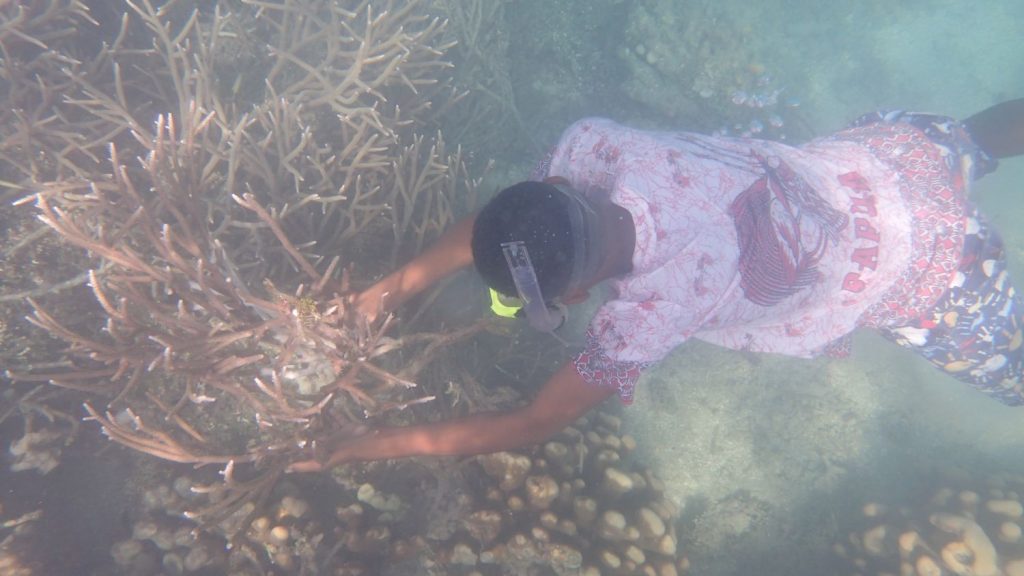
The American newspaper The Washington Post helped to promote the donation initiated by Bruce Butterworth and the dive shop Blue Planet Scuba. Their main goal is to combat the COTS in Raja Ampat because they are threatening the reefs and the tourism in the area. To do so, they collected old and new diving and snorkelling equipment for adults and children and sent them to Raja Ampat.
Since also these starfishes aren’t in deep waters and most of Papuans know how to swim, but they don’t have the necessary equipment, the masks, snorkels and fins will be useful to fight this problem.
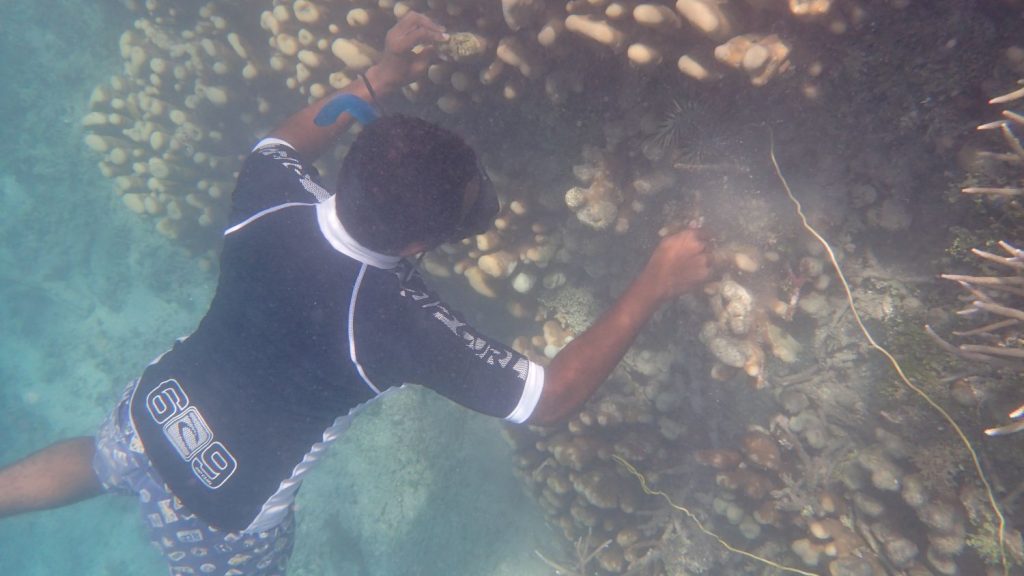
PhD Phillip Dustan suggested a simple solution to kills the COTS: inject them with a 10 percent vinegar solution.
The ecologist hopes that by teaching local dive guides who can then work with children and teenagers, the issue can be overcome.
Kindly visit the RARCC Youtube page to watch some videos about this initiative.





